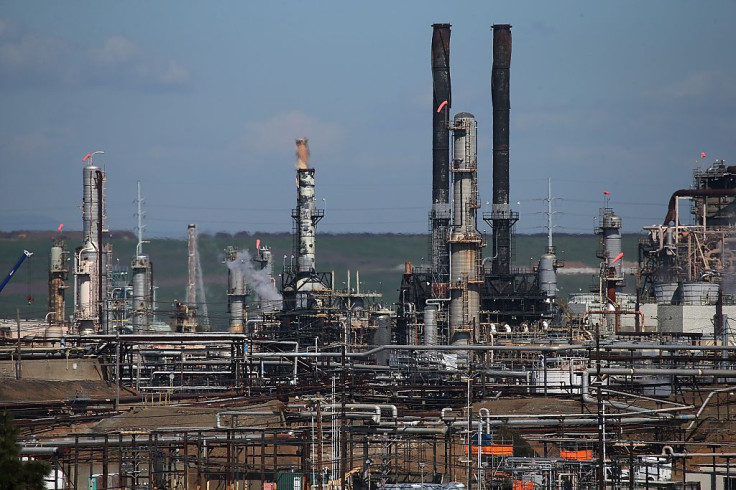There's No End In Sight For America's Disruption Of The Oil Market

OPEC usually sets the tone for the oil market as the group of oil-producing nations coordinate their oil policies to drive prices in their desired direction. However, America has upended the global oil market in recent years thanks to record-smashing production growth from the U.S. oil industry. That trend isn't expected to end anytime soon, according to the latest five-year forecast from the International Energy Agency (IEA), which predicts America will become a dominant force in the oil market.
Drilling Down Into The IEA's Latest Outlook
"Global oil markets are going through a period of extraordinary change, with long-lasting implications on energy security and market balances throughout our forecast period to 2024," the IEA wrote in its "Oil 2019" report. At the center of this transformation, which the IEA called "unprecedented," is the U.S. shale industry. The country has become a major oil exporter in less than a decade thanks to the "spectacular" growth shale has delivered in recent years.
However, the IEA made it clear that the U.S. oil industry's best days still lie ahead. "The second wave of the US shale revolution is coming," stated the IEA's executive director Fatih Birol. He noted that the next five years "will see the United States account for 70% of the rise in global oil production and some 75% of the expansion in [liquefied natural gas] trade," which "will shake up international oil and gas trade flows, with profound implications for the geopolitics of energy." Overall, the IEA sees the U.S. adding 4 million barrels per day to last year's record level of 10.9 million barrels per day, which has the country on track to "overtake Russia and close in on Saudi Arabia" as the world's largest oil exporter.
What This Forecast Means For Investors
One clear takeaway from the IEA's outlook is that investors can expect healthy production growth from U.S. oil producers over the next five years. That continued expansion has the potential to increase the cash flows and share prices of exploration and production companies, assuming the price of oil cooperates. Though with so much U.S. oil flooding the market, it could keep the pressure on crude prices.
That's why investors won't want to overlook another beneficiary of this growth: oil and gas midstream companies. These entities are building the pipelines and export terminals that will transport this output from production basins to world markets. This opportunity could be even more compelling for investors since midstream companies tend to earn fees as oil volumes flow through their systems. Given that those volumes are on track to rise, midstream earnings could soar in the coming years as the companies complete oil infrastructure expansions.
Midstream companies currently have several noteworthy projects under construction and in development. One of the closest to completion is the Gray Oak Pipeline by Phillips 66 Partners (NYSE:PSXP) , Marathon Petroleum (NYSE:MPC), and Enbridge (NYSE:ENB). When it starts up later this year, the 900,000-barrel-a-day pipeline will move crude from the Permian Basin and Eagle Ford shale to refineries and export docks along the Gulf Coast. Phillips 66 Partners and Marathon Petroleum are building one of those export terminals, the South Texas Gateway, as part of a joint venture with Buckeye Partners (NYSE:BPL) to export more oil to global markets. Buckeye Partners, which is leading construction on South Texas Gateway, expects to finish the project by the middle of next year.
Several other companies have oil export infrastructure in development. Enbridge, for example, is working with Kinder Morgan (NYSE:KMI) and Oiltanking on the Texas COLT offshore loading terminal, which they'd built several miles offshore so that they could fully load very large crude carriers that can transport 2 million barrels of oil to global markets. The offshore terminal could be in service by late 2021 or early 2022 if the companies gain all the necessary approvals. In addition, Kinder Morgan is working with both Phillips 66 Partners and Tallgrass Energy (NYSE:TGE) on oil pipeline expansions that would enhance their export projects. The Tallgrass Energy project is an integrated system that would transport oil from the Rockies to the Louisiana coast. The company hopes to move oil produced from places such as the Powder River Basin to a major hub in Oklahoma via a joint venture with Kinder Morgan. From there, oil would travel on a new pipeline to a proposed export terminal in Louisiana, where it could reach global markets. These projects have the potential to fuel significant growth for these midstream companies over the next several years, which could fuel market-beating total returns for their investors.
All That Oil Needs To Go Somewhere
The IEA forecasts that the continued fast-paced expansion of U.S. oil production will further disrupt the market over the next several years as more of this crude gets exported to global markets. However, such a gusher of production could keep a lid on oil prices, which might mute the profit growth of producers.
Midstream companies, on the other hand, could potentially see big-time growth as these volumes will need to flow out of the country through newly built pipelines and export terminals. Investors should take a closer look at the companies building this infrastructure as those businesses could be among the biggest beneficiaries of America's continued disruption of the oil market.
This article originally appeared in the Motley Fool.
Matthew DiLallo owns shares of Enbridge and Kinder Morgan. The Motley Fool owns shares of and recommends Kinder Morgan. The Motley Fool recommends Enbridge. The Motley Fool has a disclosure policy.





















